Cool Cole Crops
Mid-August is prime time to plant cole crops in Texas gardens (as in cole slaw). We’re primarily talking about broccoli, cabbage, cauliflower and Brussels sprouts, but some of the other plants in the family Cruciferae are horseradish, kale, kohlrabi, bok choy, rutabaga, mustard and radishes.
Hopefully your local nursery will have potted transplants of the types that you want. Independent retail garden centers are usually more responsive to local needs and variety recommendations, so you might start there. Look for 3- or 4-inch potted plants that are growing in generally the same amount of sunlight they’ll get when you set them out in your garden (hopefully full sun). You’ll want toughened little transplants that are sturdy and acclimated.
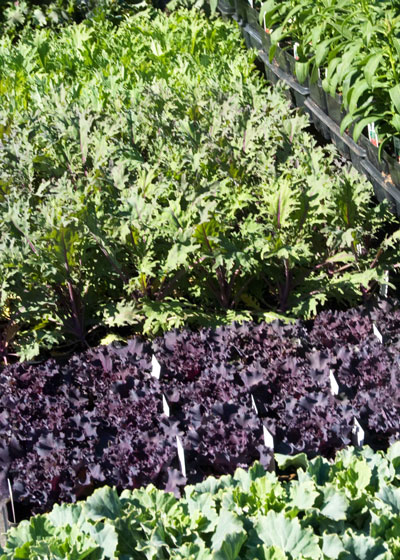
Cabbage and kale transplants are at prime size for planting.
The four main crops that we listed at the outset, broccoli, cabbage, cauliflower and Brussels sprouts, should be planted 2 feet apart in their rows, and the rows should be spaced 3 feet apart. Rework your spring garden soil before planting by rototilling in an additional 2-inch layer of organic matter. Set the plants at the same depth at which they had been growing initially, and water them immediately.
Fertilize your new plantings after three or four days with a high-nitrogen, water-soluble product to get them off to a rapid start. After one week, sidedress the rows with 1 pound of an all-nitrogen, granular lawn-type fertilizer per 100 feet of row. Repeat that every four weeks until harvest. Brush granules off the leaves and water deeply after each feeding.
Cabbage loopers will be the main threat to all of these crops. The little white butterflies seem harmless enough when you see them fluttering around your garden, but let that be your forewarning. When their larvae start devouring the plants’ leaves, you’ll want to bring them under control at once. Conventional insecticides don’t do much good on looping larvae. The organic control “B.t.” (Bacillus thuringiensis) stops them almost immediately. It can be used right up to the day of harvest. Just don’t let the loopers do a lot of damage before you start spraying or dusting. There’s nothing appealing about a head of cabbage that’s been chewed full of holes.

Small, green cabbage loopers do damage rapidly to all cole crops.
Aphids may also congregate on the tops of broccoli plants about the time that you’re ready to harvest. They’re small, pear-shaped pests that will be present by the hundreds. They’re easily washed off with a hard stream of water, even while the plants are still in the garden. Or, almost any general-purpose insecticide that’s labeled for use on edible crops will work if you prefer.
Harvest these crops at their peaks of perfection.
• Broccoli. Harvest before any of the buds has opened into small yellow flowers. Use a sharp knife to cut the heads. Leave the plants in place and you’ll get subsequent harvests of many smaller heads.
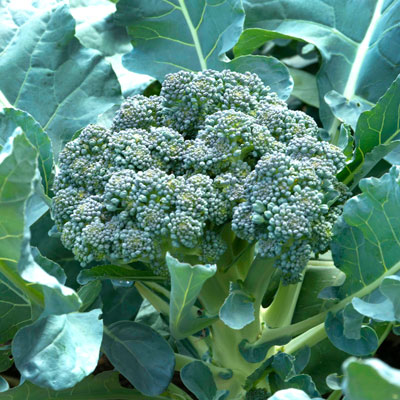
Healthy broccoli head is ready for harvest. Leave plants in place to produce more heads of smaller size.
• Cauliflower. Their heads should be 5 or 6 inches across, depending on the plants’ vigor. If you want white cauliflower, take the top-most leaves and secure them over the heads to prevent sunlight from reaching them. Secure the leaf tips with large, soft rubber bands.
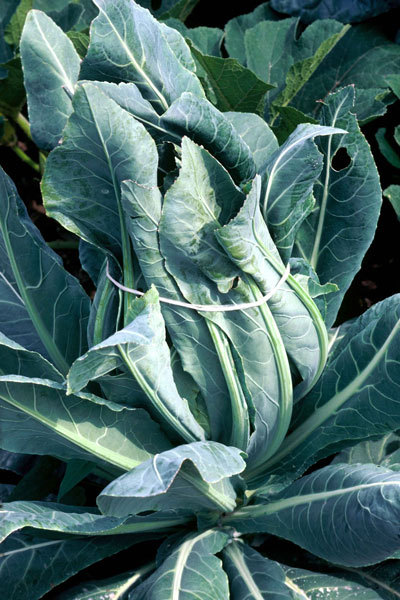
Leaves are pulled up around cauliflower head to “blanch” it (keep it white).
• Cabbage. These heads should be cut when they’re about two-thirds full-size. Leaving them longer risks splitting.

Young, potted cabbage transplants are ready to be set out.
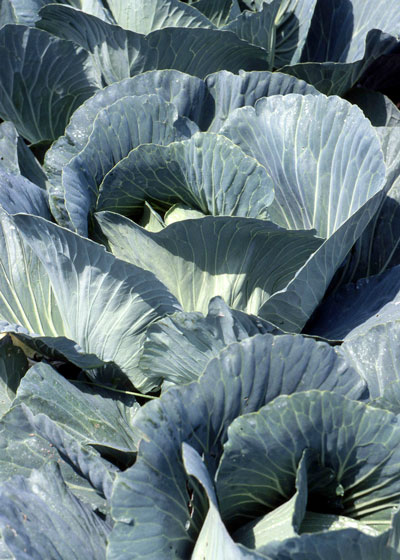
Cabbage heads are quickly nearing maturity.
• Brussels sprouts. These plants should be tip-pruned to remove the growing shoot on each plant when the plants are 18 or 20 inches tall. The “sprouts” will then form along the stems. When they’re about the size of ping pong balls, you can harvest them individually.
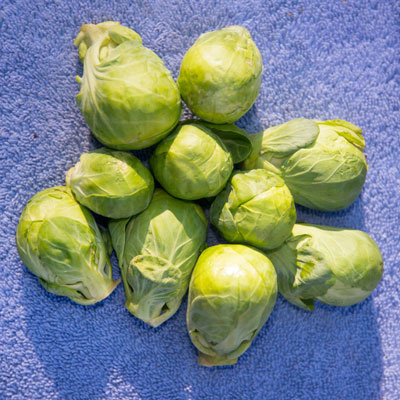
Brussels sprouts must be planted early enough (now) to allow harvest before cold winter weather.
